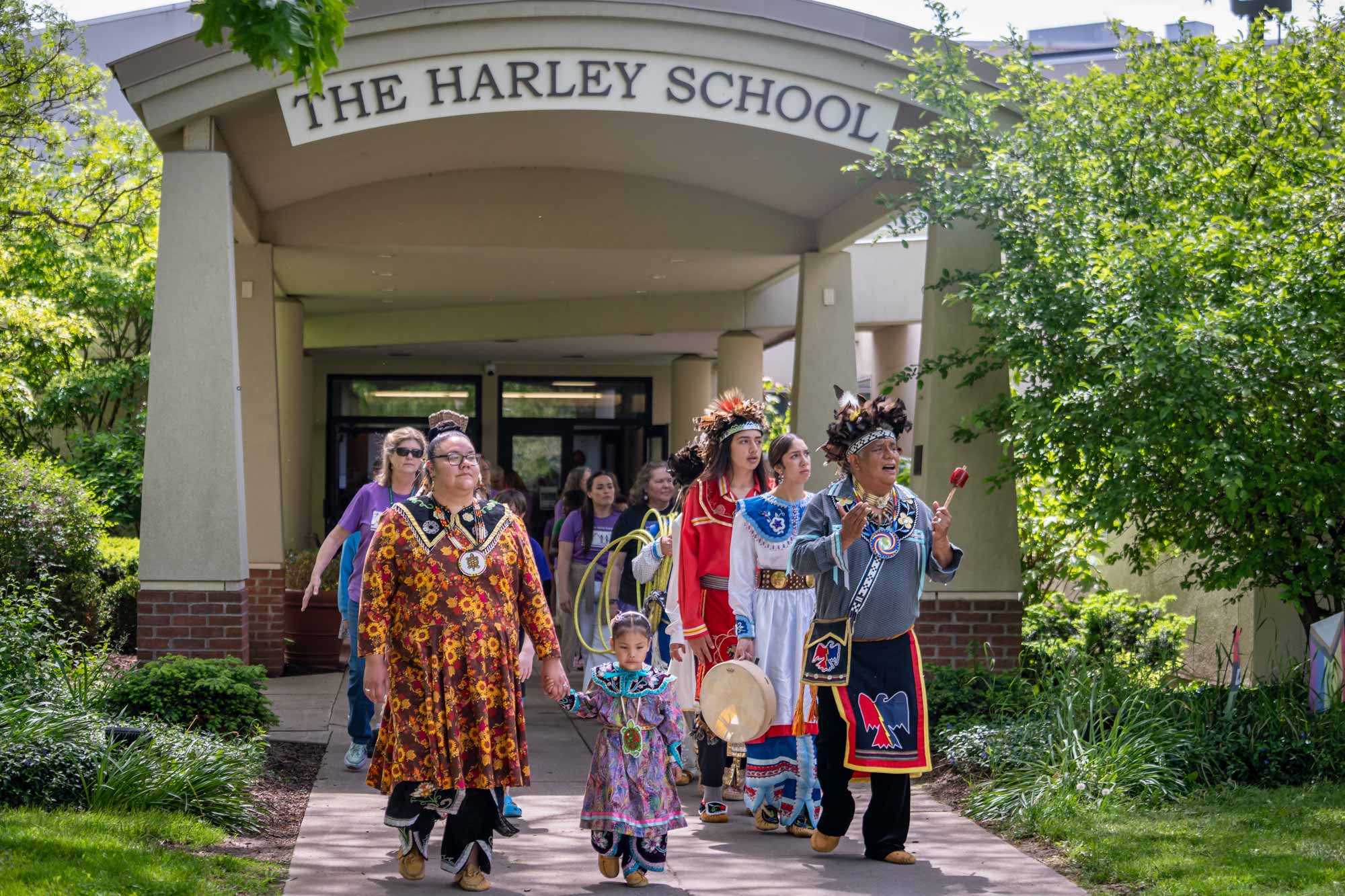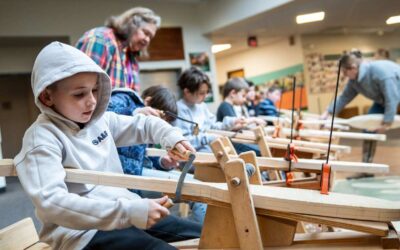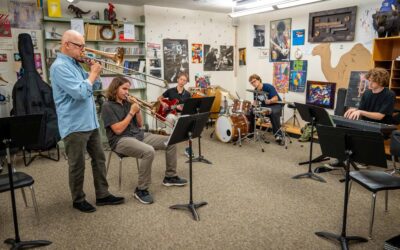The Harley School held a powerful all-school assembly on Friday, culminating in the raising of the Haudenosaunee Flag. The ceremony honored the enduring significance of the Hiawatha Belt, a symbol of the world’s longest-functioning democracy, and featured contributions from Indigenous community members, Harley students, faculty, and alumni.
The event included an introduction to the Harley Wampum belt, a collaborative project created by Grade 4 students last year. The Grade 3/4 Choir performed a moving Peace song, followed by the raising of the Hiawatha Belt flag, which now flies proudly on the flagpole outside the school.
Following the indoor ceremony, traditional social dances were led by the Seneca Allegheny River Dancers on the soccer field, providing a vibrant cultural experience for all attendees.
Student and Alumni Participation: The ceremony featured prominent roles for Harley community members, including alumna Rosie Yellow ’19, who was joined onstage by current students Ellie L-B. ’27, Laura S. ’34, and Karina S. ‘36.
Educational Context from Harley’s Indigenous Studies Teacher: Harley’s Indigenous Studies teacher, Trish Corcoran P’16, P’23, provided essential background information and family resources:
Who are the Haudenosaunee? The Haudenosaunee, often erroneously referred to as “Iroquois” by colonizers, are comprised of six nations: Onondowaga (Seneca), Gayogono (Cayuga), Ganakdagweñni•yo’geh (Onondaga), Onyota’a (Oneida), Kanien’keha (Mohawk), and later the Skarureh (Tuscarora). The Confederacy was originally formed by the Five Nations, with the Tuscarora joining in 1722 to become the Six Nations.
What is the Hiawatha Belt/Mat? The Hiawatha Belt commemorates the formation of the Haudenosaunee Confederacy. Its design features a central White Pine on a field of purple, symbolizing hardship. The four white rectangles represent the Nations’ longhouses, linked by the White Pine, which symbolizes Onondaga, the Confederacy’s heart where weapons were buried under the Tree of Peace. White bands extending from the belt represent open arms, welcoming other Nations to join in their democracy and peace, as exemplified by the welcome extended to the Tuscarora.
Further Learning Resources:
- Rochester Museum and Science Center: A valuable local resource for learning more about Indigenous cultures.
- Ganondagan: The Town of Peace: This State Historic Site was once a large 17th-century Seneca Town, housing an estimated 4,500 people in over 150 bark buildings. Ganondagan (Gah-nun-dah-gan), meaning “White Town” or “Town of Peace,” hosts an Indigenous Music & Arts Festival on July 26 & 27 from 10:00 AM to 5:00 PM daily.
- Skä•noñh Center: The Great Law of Peace Center: This Haudenosaunee (Iroquois) Cultural Center in Syracuse focuses on telling the story of the native peoples of central New York through the lens of the Onondaga Nation. It covers topics such as Creation, European Contact, and The Great Law of Peace. Skä•noñh is an Onondaga welcoming greeting meaning “Peace and Wellness.”




